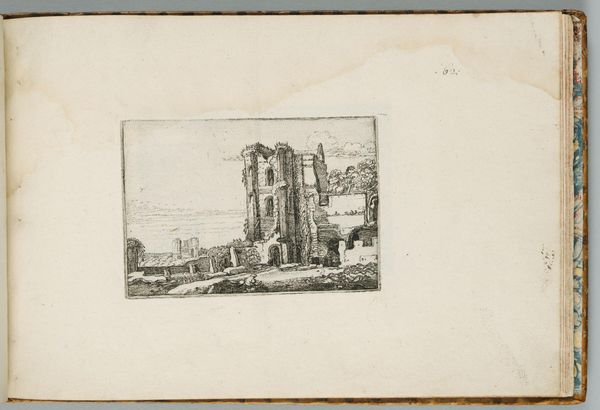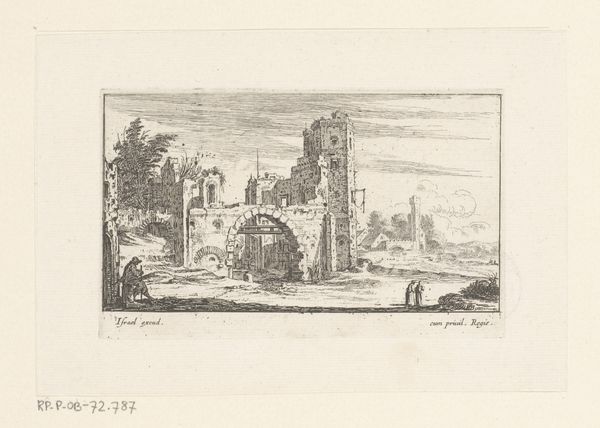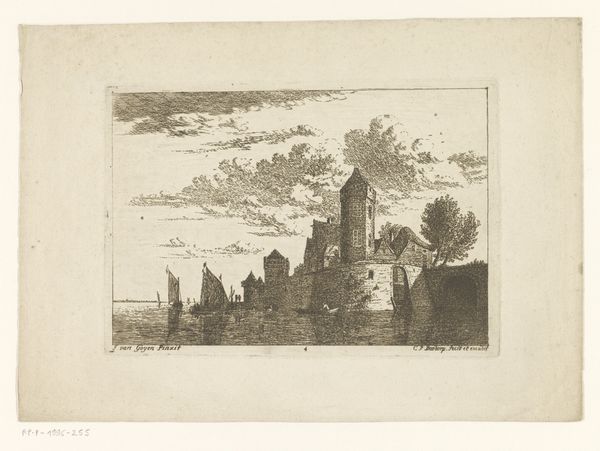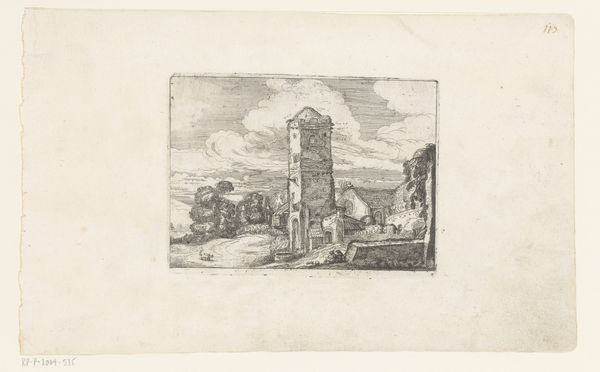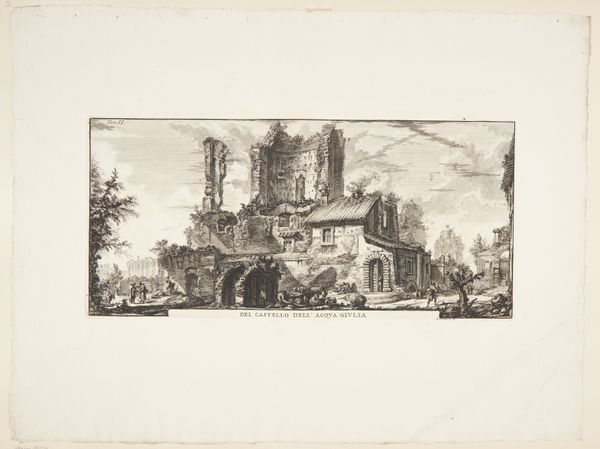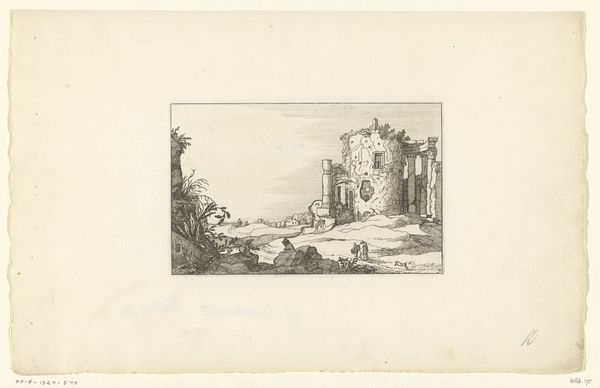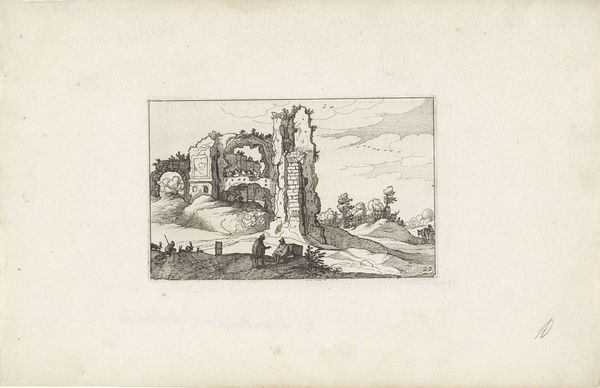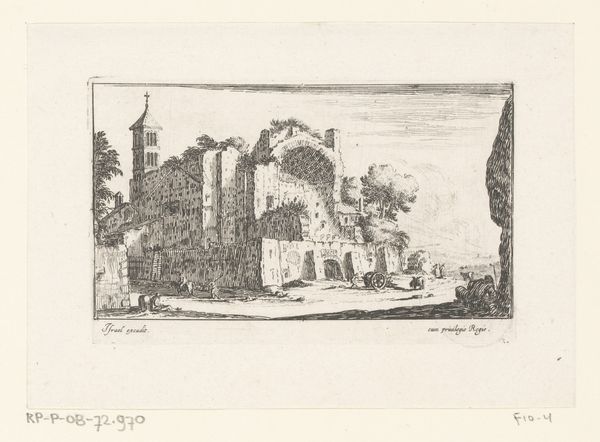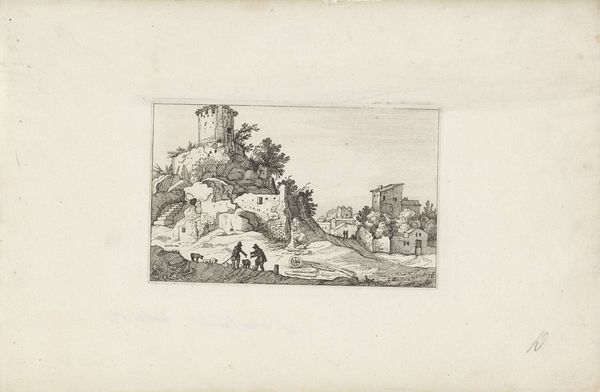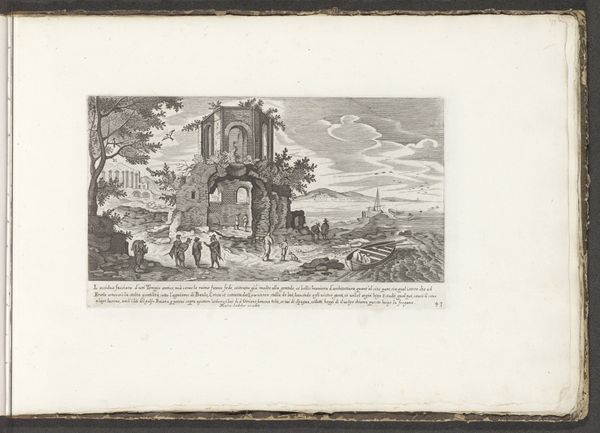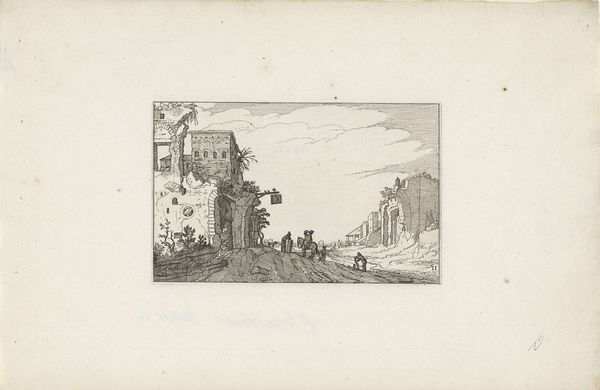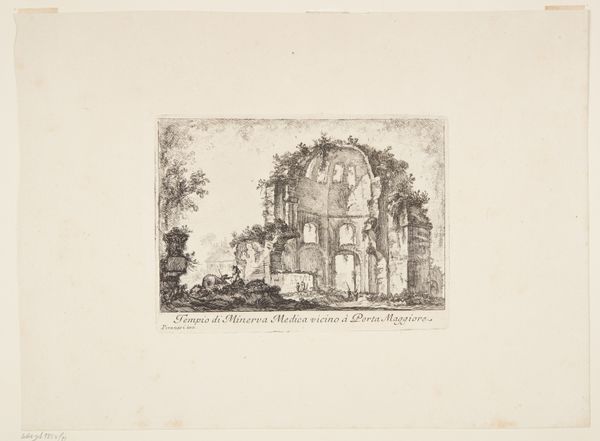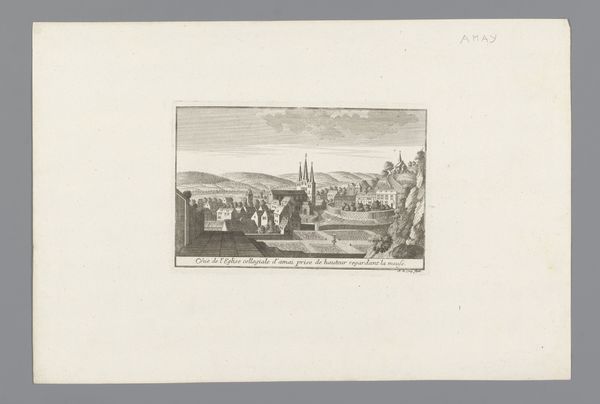
print, etching, engraving
#
baroque
#
dutch-golden-age
#
ink paper printed
# print
#
etching
#
old engraving style
#
landscape
#
line
#
engraving
#
realism
Dimensions: height 102 mm, width 156 mm
Copyright: Rijks Museum: Open Domain
Curator: There's a palpable sense of stillness about this etching. It’s as though the very air has paused, laden with history. Editor: Yes, there’s a quiet melancholy. Those stark, almost clinical lines against the subject—the ruins feel…resigned. Curator: Indeed. What we are looking at is Claes Jansz. Visscher’s “Landschap met twee ruïnes,” created around 1618. Editor: The title's direct, just lays it all bare. But what intrigues me is this choice of ruin. It speaks volumes—or perhaps absences—about power, time and legacy. The crumbling forms appear like fossilized memories. Curator: Precisely. Visscher was a master of landscape etching. Ruins in art served as more than mere aesthetic subjects. They function as symbolic reminders of the past, often linked to morality or vanity. Editor: Right, a “memento mori” in architectural form. Like dust to dust, brick to…well, more dust! It also plays with perception, doesn't it? These structures were once mighty, signs of grand ambitions and human ego. Now nature encroaches. Plants snake through the stonework, as if slowly reclaiming her own. Curator: You've articulated the subtext perfectly. Dutch Golden Age art often incorporated ruins as allegories for societal and individual introspection. It begs a very Dutch question, considering their recent independence struggle with the Spanish: What structures will endure, and what meaning will remain for those who follow? Editor: Absolutely, the ghosts of empires past whisper through Visscher's needle. Even now, centuries later, these ruins pose that challenge, that humbling of human enterprise. It reminds me that we’re all essentially living in somebody else's ruins, aren’t we? Continuously building and rebuilding, knowing it's all temporary. Curator: And on a simple technical level, that etching… Visscher's mastery of line to communicate so much texture, volume, and atmospheric effect—impressive, really. Editor: Agreed! It's an almost understated masterpiece, a landscape with the power to subtly unearth layers upon layers of thought. Curator: Thank you, I feel our look into “Landschap met twee ruïnes” has done just that. Editor: The past brought to light… or to shadow… as is often the case! Thank you!
Comments
No comments
Be the first to comment and join the conversation on the ultimate creative platform.
